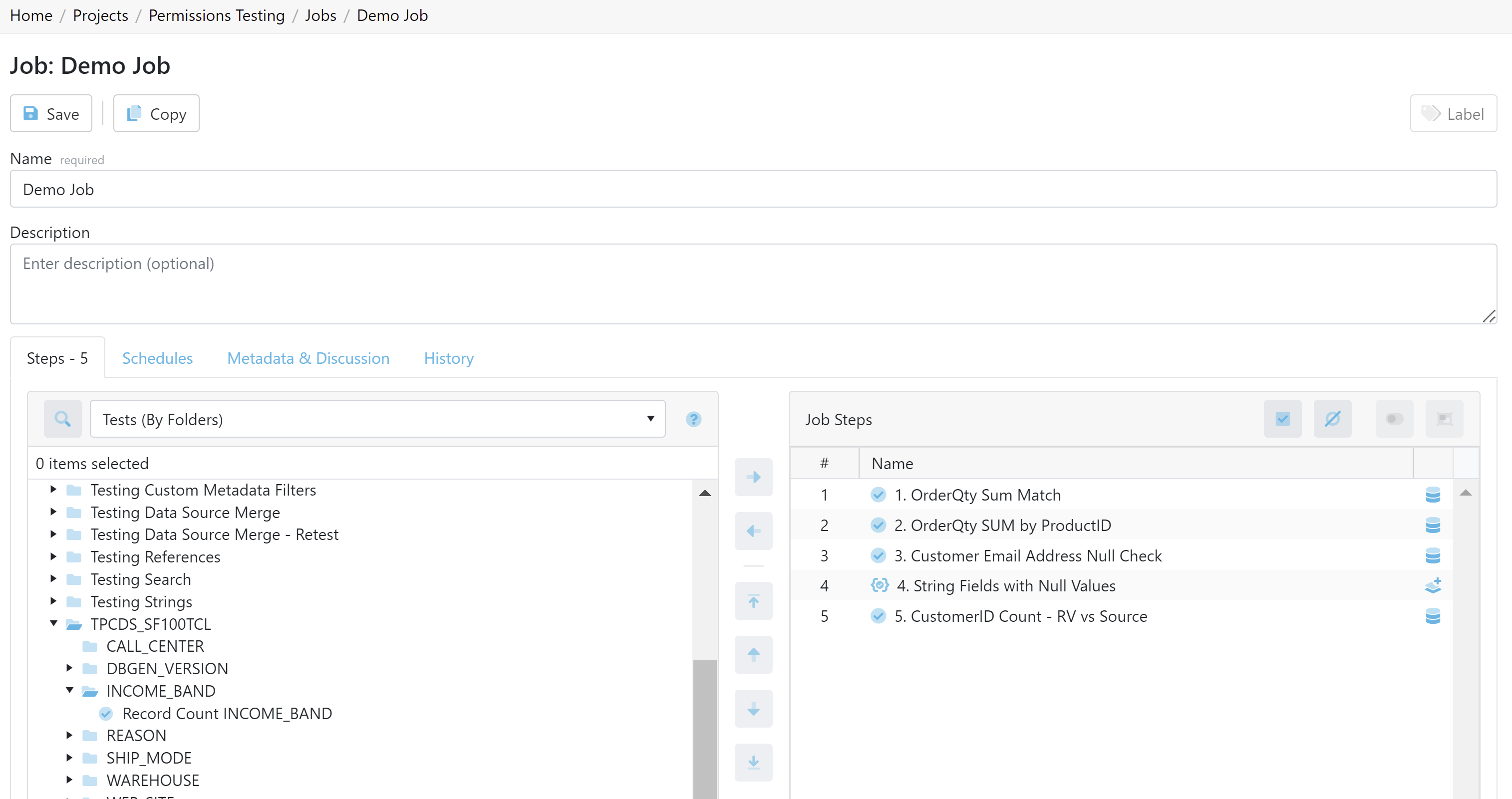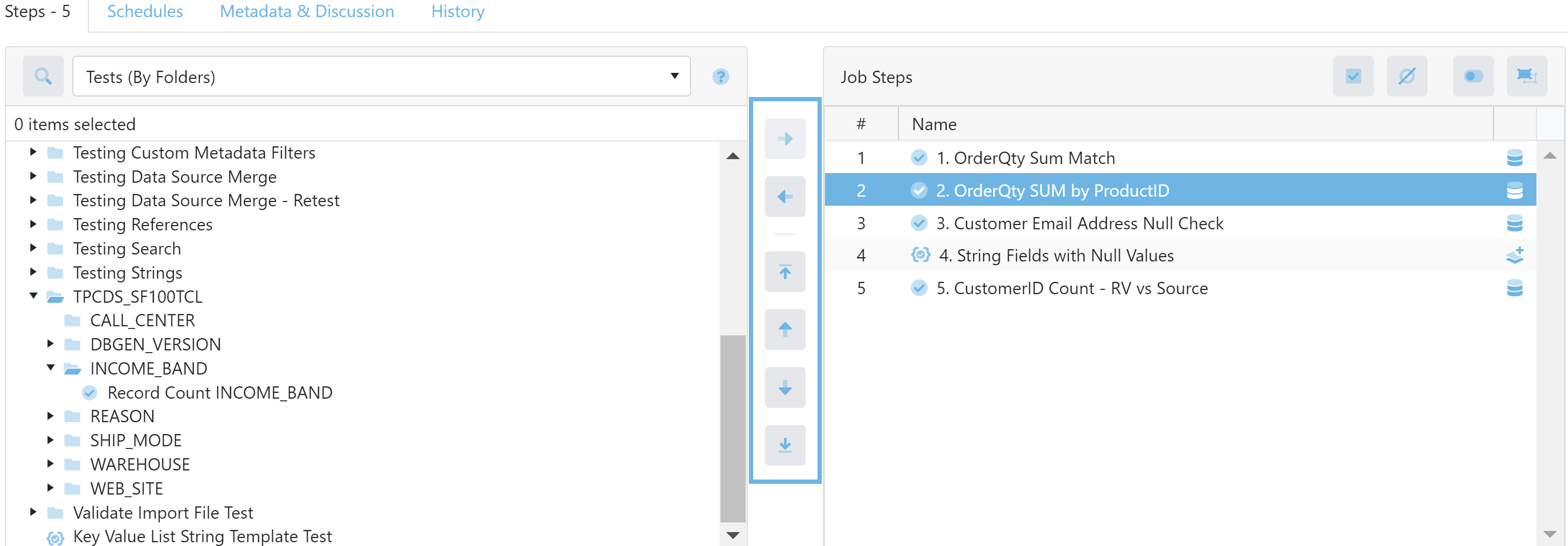Overview
Jobs provide your data testing and profiling efforts the opportunity to tell a more complete story of what's happening in your environment. By executing tests and profiles together, your test coverage increases which improve the measure of your data quality.
The Job Configuration page provides an interface for choosing the objects to be included in a job, when to run the job, and defining email notifications to send upon job completion.
Job Steps
The Steps section of the Job Configuration page consists of a list of available tests and jobs on the left-hand portion of the screen and a list of selected job steps on the right-hand portion of the screen tagged as Job Steps.

There are four types of objects that can be added to a job:
- Standard Tests
- Template Tests
- Jobs
- Profile Sets
Available objects can be found using the Tests (By Folders) dropdown or by toggling to the search view using the search icon to the left of the dropdown.
Job Step Buttons
| Arrow buttons (highlighted in the above image) | Allow a user to :
|
| Select All | Selects all items on the job steps list. |
| Deselect All | Deselects all items on the job steps list. |
| Disable Job Step | Disables the selected job step from executing when running the job. |
| Group / Ungroup Job Steps | Group job steps together to run them in parallel. Ungroup job steps to run them sequentially. Grouped steps share the same step number. Ctrl + click on multiple tests within Job Steps and then click on the Group button to create a group of tests. |
Clicking the database icon in Job Steps allows the user to choose source and target connections that differ from the default for standard tests. If a different connection is chosen, the database icon will turn blue. Similarly for runtime configuration of Template Tests, clicking the materialize icon allows the user to enable child test materialization before running the job. If this option is enabled, the materialize icon will turn blue.
Schedules
Each job can be assigned one more schedules designed to run the job automatically. Check out Scheduling a Job to learn more about creating a schedule.
Metadata & Discussion
Similar to tests and metadata objects, jobs are associated with custom fields and have a section for users to leave comments. Have a user with Edit Metadata permission update the custom fields for Jobs.
History
View the execution history of each job to see the results over time. You can also see when users create, modify, or copy the job using Event History.
